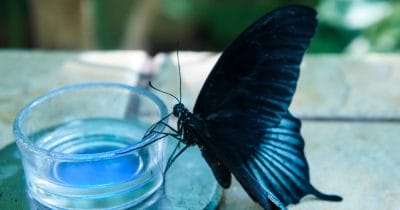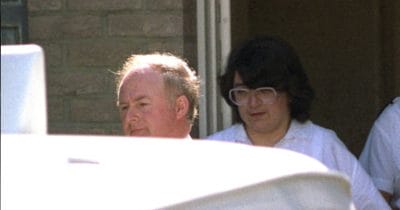
February 3,1959 will long be remembered as the day the music died, but for the “Baby Face” singer Bobby Vee, it was the day his career was given life…

Bobby Vee, who’s known for chart-topping hits like “Take Good Care of My Baby” and “Suzie Baby,” got his lucky break on the same day the music world was crushed by tragedy.
Buddy Holly, Ritchie Valens, the Big Bopper, Dion and other pop stars, were traveling on a tour bus, performing 24 back-to-back shows through the rough and snowy terrain of the Midwest in the Winter Party Tour, which is known as rock & roll’s “Tour from Hell.”
Tired of being on the unheated bus–some artists had gotten frostbite and the flu–Holly chartered a single-engine aircraft to quickly carry him, Valens, and the Big Bopper from Clear Lake, IA to the next stop, in Moorhead, MN, which is a six-minute drive from Fargo, ND, the home of the then 15-year-old Bobby Vee.

It was just before 1 a.m. when the plane crashed killing the pilot and all three stars, a dark day observed by singer-songwriter Don McLean in his 1972 pop song “American Pie.”
Despite the tragic loss of music’s greatest stars, which was felt across the world, the tour went on, with new headliners Jimmy Clanton, Fabian & Frankie Avalon. Frankie Sardo, Dion & The Belmonts, and The (new) Crickets–who took the bus to Moorhead–continued until the end of the tour.
That day, Vee’s name would also appear on the playbill as a headliner.
Vee, born Robert Thomas Velline, was a fresh-faced, clean-cut boy whose love for music was inherited from his musical family. Learning how to play the guitar from his big brother Bill, Vee used his earnings from his paper route to purchase his first guitar, and practiced in a band with Bill and two high school friends, Dick Dunkirk and Bob Korum.
On February 3, the two brothers had tickets to the star-packed Moorhead event, The Winter Dance Party, with the headliner, Buddy Holly, whom Vee idolized.
“Like so many other people, I became a Buddy Holly fan the very first time I heard him sing,” Vee said.

Learning of the crash, Vee said he was “stunned.”
“I remember a few years ago when Buddy was scheduled to appear at a dance in my home town of Fargo, North Dakota. It was going to be a big event for the whole town, but even more so for me. I was anxiously looking forward to seeing Buddy in action. The day he was to arrive disaster struck, taking Buddy’s life, along with the lives of two other fine singers, Ritchie Valens and the Big Bopper. The shocking news spread through Fargo very quickly,” Vee said.
The news spread and a local DJ delivered desperate pleas for replacement performers. Though never having played before an audience, Vee and his band volunteered.
The boys had three hours to prepare, and they only had about six songs to perform.
“Our style was modelled after Buddy’s approach and we had been rehearsing with Buddy’s hits in mind. When we heard the radio plea for talent, we went in and volunteered. We hadn’t even named the group up to that time, so we gave ourselves a name on the spot, calling ourselves The Shadows.”

After a tribute by Waylon Jennings–Holly’s bass player and future country music star–the quartet was put on stage as the Shadows, a name Vee chose on the spot.
“It changed my life. I wouldn’t be here if it wasn’t for that show,” Vee said, recalling that lucky day.
When the show ended, the tour continued with headliners Jimmy Clanton and Frankie Avalon, but the Shadows were left behind.
Their next gig was a Valentine’s Day show at a high school gymnasium, where they earned $60, and in the following months, they added a pianist, Elston Gunnn, to their roster.
That pianist was Bobby Zimmerman, now known as Bob Dylan.
“He was in The Shadows. Yeah, he played piano, but he didn’t play very well, and we didn’t have a piano. He talks about playing in a church basement, and that’s true,” Vee said about Dylan. “The piano was horribly out of tune. He could play “Whole Lot Of Shakin’ Going On.” He played really well in the key of C, but that was about it.”
Dylan moved on from the band and found his place in folk music with a guitar.
And Bobby Vee went on to record 38 Top 100 songs from 1959 to 1970, hitting No. 1 in 1961 with the Carole King-Gerry Goffin song “Take Care Good of My Baby,” and “Run to Him,” reaching No. 2. Other hits include “Run to Him,” “Rubber Ball,” “The Night Has A Thousand Eyes,” “Come Back When You Grow Up,” and “Punish Her.”

Vee continued to perform with his new band the Vees, made of sons Robby, Tommy, and Jeff, until 2011, when he was diagnosed with Alzheimer’s disease, a degenerative and incurable brain disorder.
In an interview with the Associated Press, Vee stumbled in finding his words and said, “It’s not getting any better, I can tell you that. But I’m doing the best I can.”
Still, in 2014, Vee released The Adobe Sessions, a jam session recorded with family members featuring some of his favorite songs from Townes Van Zandt, Gordon Lightfoot and Ricky Nelson. It was released on the 55th anniversary of the Buddy Holly plane crash.
After having four children and 50 years of marriage, Vee’s wife Karen died of kidney failure in 2015 at age 71. Bobby Vee died the next year at 73.
Speaking of his condition, and his life, Vee said in an interview, “But I’m not going to cry about it. God brought me home. And that’s the deal.”

What a voice he had, Bobby Vee was great! It’s hard to imagine he only had one # 1 song, they were all great. Those were so much simpler days back then.
Do you remember listening to Bobby Vee? Feel free to share your memories in the comment section and don’t forget to share this article with all of your friends on Facebook.





